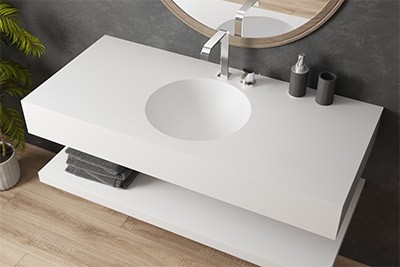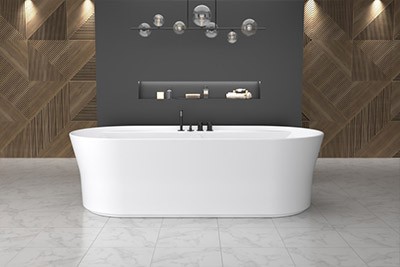What is architecture?
The word architecture comes from ancient Greek, where "archi" means "chief" and "tekton" means "builder". Architecture is the art of construction, directed by a master builder. Much more than just a means of constructing buildings, architecture is the art and science of creating places where we can live, work, play and dream. It tells us stories, makes us feel emotions and has an impact on our daily lives. Architecture evolves over time, reflecting the fashions and needs of the times.
In this article, we're going to explore the world of architecture. We'll look at how architecture has evolved over time, how it affects our lives today, and how to become an architect.

What are the different types of architecture?
The history of architecture tells the story of how people have constructed buildings over time. Each period has had its own way of designing and building, influenced by the culture, technology and needs of each era.
The beginnings of Architecture: Antiquity
In ancient times, architecture was influenced by three civilisations: the Egyptians, the Mesopotamians and the Greeks.
The Egyptians built pyramids to serve as tombs for the pharaohs.
In Mesopotamia, civilisation built ziggurats. These buildings served as both temples and landmarks for the citizens of the first cities.
The Greeks left an extraordinary architectural legacy: they developed architectural principles that are still used today.
Architecture in medieval times
Medieval architecture was shaped by the realities of the time (conflicts, religious law). The Middle Ages saw the emergence of Gothic architecture. Gothic architecture was marked by two emblematic types of building: fortified castles and Gothic cathedrals.
Fortified castles, or "medieval castles", were essential defensive buildings in medieval times. They were designed to resist attack and to shelter the nobility and their subjects in times of danger. They represented society's need for security.
Gothic cathedrals are religious works of art. They are a veritable architectural treasure trove from the medieval age and were built to inspire awe and devotion. These religious buildings boasted unique architectural features such as pointed vaults, buttresses and colourful stained glass windows.

Architecture in the Renaissance
The Renaissance began in 14th century Italy, before spreading throughout Europe. It was an artistic and cultural period that brought about a radical transformation in architecture. As its name suggests, the Renaissance was inspired by the architectural principles of Greco-Roman antiquity, both in terms of harmony and the quest for ideal beauty.
During the Renaissance, architects studied the writings, sculptures and ruins of Greek and Roman civilisations. This gave rise to an architectural approach characterised by the search for harmony and aesthetic beauty.
Renaissance architects created imposing domes, and perfected art and perspective, creating murals and frescoes that added a dimension of realism and depth to works of art.
Today, palaces, villas, town halls, guild houses, fortifications and some religious buildings are all examples of Renaissance architecture.
Baroque architecture
Baroque architecture emerged in the mid-16th century. It embodies a bold blend of opulence, tormented artistic expression and exuberance. Baroque architecture is characterised by its extravagant and varied use of materials, vibrant colours and subtle interplay of light and shadow.
Baroque architecture goes far beyond mere construction, transforming itself into an authentic aesthetic experience that bears witness to the power, faith and aestheticism characteristic of the period.
Classical architecture
Classical architecture originated in ancient Greece and Rome. It takes its model from classical antiquity and is characterised by harmonious proportions, clean lines and carefully considered architectural elements. This architectural model emphasises the search for balance, order and elegance in every detail. Classical architecture emphasises concepts such as humility, intellect and boldness. It features symmetry and proportions, columns in a specific style or order, a close front surmounted by a pediment, durable building materials...
This type of architecture has left its mark on architectural history, becoming a benchmark in the world of art and construction.
Today, the type of buildings that use classical architecture are religious edifices, castles, schools, public buildings, theatres and museums.

Art Nouveau architecture
Art Nouveau brought a fresh approach to architecture at the end of the 19th century. This architectural model left a deep imprint on architecture, the decorative arts, painting and sculpture.
Art Nouveau architecture was characterised by the rejection of rigid geometric forms in favour of an organic, fluid style inspired by nature and curves. Architects were inspired by motifs such as plants, flowers, insects and the curves of waves to create elegant, flowing designs.
During the Art Nouveau period, buildings and interiors were adorned with graceful curves and serpentine lines, creating an impression of movement and dynamism. They were also adorned with delicate details, colourful stained glass, artistic ceramics and murals.
Modern architecture
The 20th century saw profound changes in architecture, with the arrival of modern architecture. Modern architecture was characterised by practicality, minimalism and efficiency, in response to the demand for comfortable, aesthetically pleasing homes in perfect harmony with the environment.
Architects are seeking to design spaces that respond effectively to society's needs. The result is open interiors, efficient use of space and aesthetic simplicity.
In terms of materials, architects now use reinforced concrete to build skyscrapers and bold structures. Glass was also used in the 20th century, as part of the concept of large glazed openings to the outside world.
Modern architecture is developing new shapes and structures, making them more fluid and organic. Buildings are constructed in atypical geometric shapes with flat roofs.
Finally, architects are also looking at the environment, enabling architecture to move towards sustainable development. They are now designing buildings with greater energy efficiency, and using green technologies by including elements such as solar panels.
Contemporary architecture
Contemporary architecture began in the middle of the 20th century and continues to the present day. It reflects the diversity of our times, since contemporary architecture brings together all styles of construction to innovate and respond to the need for originality and optimisation of society's quality of life.
Architects are pushing back the boundaries of creativity. They design buildings that minimise their impact on the environment and use innovative, recycled materials and green technology.
Technological advances such as 3D modelling, 3D printing and virtual reality are also opening up new possibilities for today's architects, enabling them to explore complex designs and visualise their entire projects.

Studying to become an architect?
To become an architect, it is essential to follow specialised studies in the field of architecture to obtain a Diplôme d'Etat d'Architecte (bac+5 level). To this is added a further year (bac + 6 level) to obtain the authorisation to manage projects in your own name. You can then specialise at bac+7 level. Schools of architecture offer comprehensive, highly demanding programmes that combine theory (understanding the fundamental principles of architectural design, mastery of drawing and modelling techniques and knowledge of building materials) with practice, preparing future professionals to design and build innovative, functional structures.
Architecture, beyond its etymological origins, is a way of telling stories, expressing emotions and creating the spaces in which we live our lives. From ancient times to the present day, architecture has evolved, reflecting society's needs, ideas and progress.
Every era has its own architectural stamp. Whether it's the graceful lines of the Renaissance, the opulence of the Baroque or modern simplicity, each style tells us something about the time when it was created. Today, with modern technologies, architects are exploring new ideas, seeking to make our living spaces more sustainable, efficient and enjoyable.
Architecture is an integral part of our daily lives, and every building we see tells a story, reminding us of where we came from and guiding us towards where we need to go.
To become an architect today, it is essential to follow a specialised educational path. Schools of architecture are where creativity meets rigour.






